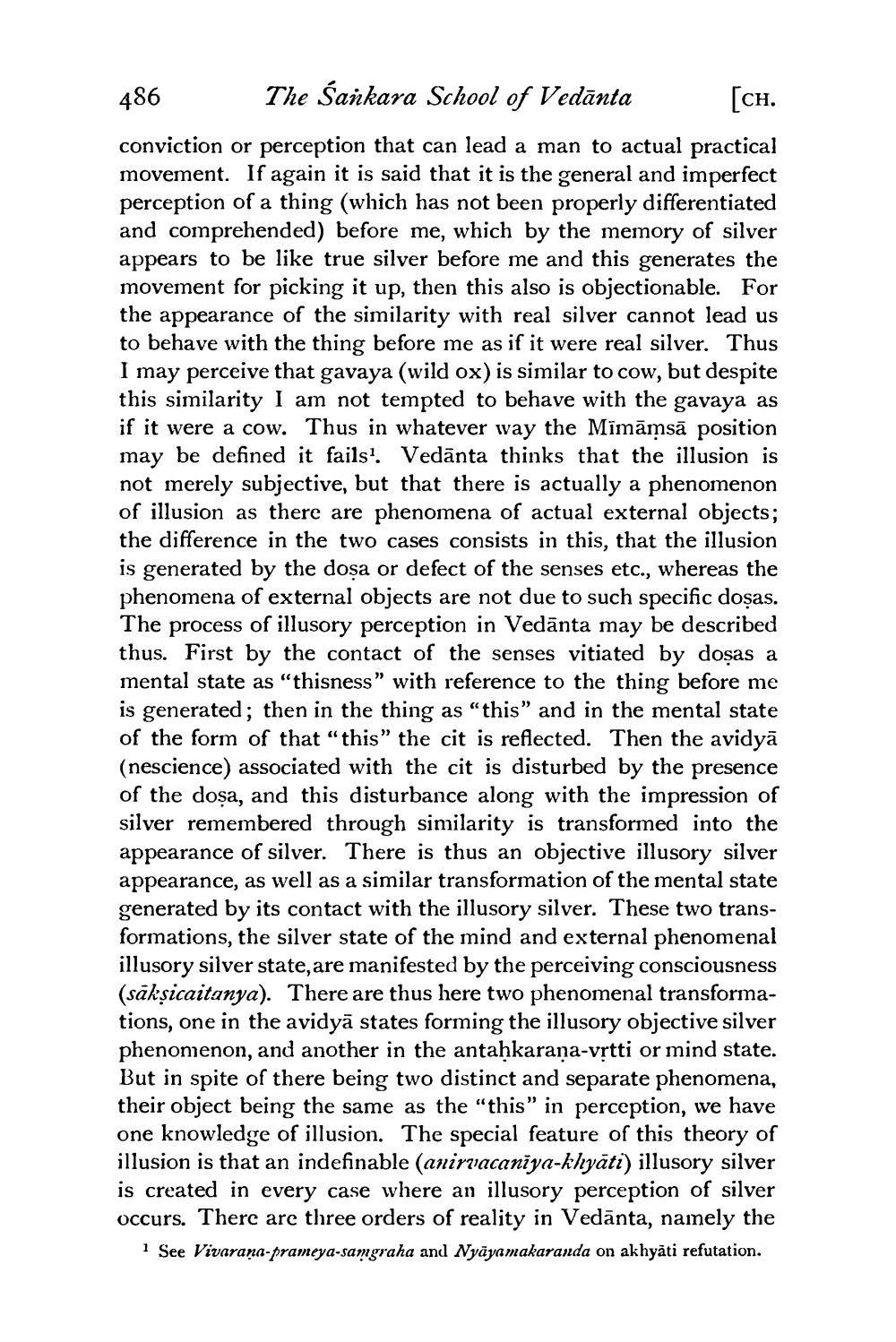________________
486
The Sankara School of Vedanta
[CH.
conviction or perception that can lead a man to actual practical movement. If again it is said that it is the general and imperfect perception of a thing (which has not been properly differentiated and comprehended) before me, which by the memory of silver appears to be like true silver before me and this generates the movement for picking it up, then this also is objectionable. For the appearance of the similarity with real silver cannot lead us to behave with the thing before me as if it were real silver. Thus I may perceive that gavaya (wild ox) is similar to cow, but despite this similarity I am not tempted to behave with the gavaya as if it were a cow. Thus in whatever way the Mīmāmsā position may be defined it fails'. Vedanta thinks that the illusion is not merely subjective, but that there is actually a phenomenon of illusion as there are phenomena of actual external objects; the difference in the two cases consists in this, that the illusion is generated by the doșa or defect of the senses etc., whereas the phenomena of external objects are not due to such specific dosas. The process of illusory perception in Vedanta may be described thus. First by the contact of the senses vitiated by dosas a mental state as "thisness" with reference to the thing before me is generated; then in the thing as "this" and in the mental state of the form of that "this" the cit is reflected. Then the avidyā (nescience) associated with the cit is disturbed by the presence of the doșa, and this disturbance along with the impression of silver remembered through similarity is transformed into the appearance of silver. There is thus an objective illusory silver appearance, as well as a similar transformation of the mental state generated by its contact with the illusory silver. These two transformations, the silver state of the mind and external phenomenal illusory silver state, are manifested by the perceiving consciousness (sākṣicaitanya). There are thus here two phenomenal transformations, one in the avidyā states forming the illusory objective silver phenomenon, and another in the antaḥkarana-vṛtti or mind state. But in spite of there being two distinct and separate phenomena, their object being the same as the "this" in perception, we have one knowledge of illusion. The special feature of this theory of illusion is that an indefinable (anirvacaniya-khyāti) illusory silver is created in every case where an illusory perception of silver occurs. There are three orders of reality in Vedānta, namely the
1 See Vivarana-prameya-samgraha and Nyāyamakaranda on akhyāti refutation.




